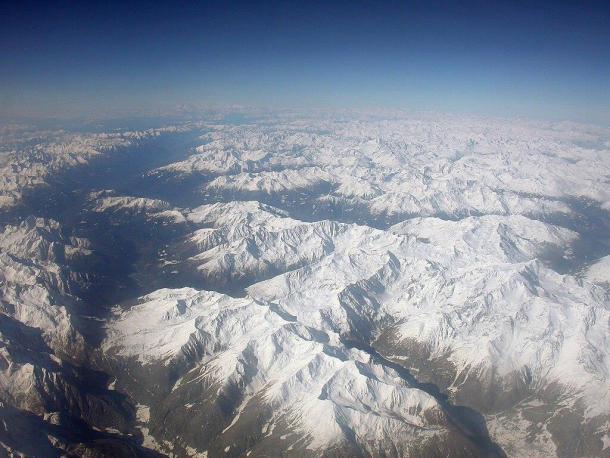🔴 Website 👉 https://u-s-news.com/
Telegram 👉 https://t.me/usnewscom_channel
Some of the world’s earliest-known graffiti artists in Italy carved into rock tens of thousands of images from the mundane to the mystical, recording scenes from the twilight of the Stone Age to the dawn of civilization.
The artists who carved the Valcamonica rock art depicted animals, scenes of hunting and fishing, weapons and tools, war, magic, buildings, agriculture, and human and divine figures.
The people left a rich heritage of petroglyphs in Lombardy from which scholars are learning about the ways of life, economies, beliefs and societies of people in the Palaeolithic, Neolithic, Copper, Bronze, Iron and Roman ages.
In 1979, UNESCO declared the Camonica Valley petroglyphs a World Heritage site, the first such site in Italy. Estimates of the number of rock carvings range from 140,000 to 300,000. The people of the valley are called Camunians or Camuni.
The UNESCO website on Valcamonica says pre-Camunian and Camunian artists carved drawings along both sides of the 75km (46 mi) valley. The images depict a chronological sequence of prehistoric subjects, from hunting-gathering to later agricultural scenes, navigation, duels, religion, and geometric-symbolic petroglyphs.
The region of the Camonica Valley as seen from an airplane. (Public Domain)
Scientists say the engravings, which are in good condition, are among the most important records of European prehistoric lives, mentality and customs. The study and interpretation of the petroglyphs have advanced the fields of ethnology, sociology and prehistory, UNESCO says. Some of the images resemble other rock art in Europe and around the world.
“An immense mosaic of events, traditions and myths provide a new dimension on 10,000 years of European history,” says a paper by archaeologist Emmanuel Anati, who has studied the rock art and peoples of the Camonica Valley for decades.
A Shift from Hunting-gathering to Farming and the Supernatural
The oldest images, dating to the late Paleolithic from as early as 10,000 BC to 5500 BC, depict large animals, some with apparent wounds. In some images, spears are shown piercing animals’ bodies. During this period, the images were drawn by nomadic hunters still using stone tools, not metal.
Rock drawing of two figures in a duel with a symbol between them. (Public Domain)
After this period, Anati writes, the style of art underwent drastic change in Camunian periods I and II from 5500 BC to 3300 BC. Animals as prey were not the main subject. Rather, the artists began carving anthropomorphic figures in a posture of prayer, with up-raised hands. Domesticated dogs, oxen and goats appear. Ploughs indicated farming.
The drastic change likely indicates that people from outside Valcamonica moved in with a more complex economy of animal rearing and agriculture. The newcomers replaced a reliance solely on hunting and gathering, Anati’s paper says.
Then a striking theme indicating a spiritual element entered the picture. Anati writes that in later phases of Period II, the carvings show anthropomorphic beings more than 2 m (6.56 ft) high:
“They provide evidence of an ideology concerning humanlike supernatural beings. They had become part of the collective imagination and of the mystic-mythic ethnic heritage. They probably were representations of mythic ancestral spirits or some other sort of non-visible idealized kin entities.”
Around the time the Camuni started farming and doing more sophisticated rock art, people in the Near East were more advanced, with aristocratic leadership and hierarchy, burial centers, monuments and highly involved ceremonies. In most of Europe at this time, including Valle Camonica, the technology and tribal social structures were simpler.
Some of the drawings reproduced. Note the swastika-like symbols. (Article by Emmanuel Anati)
The mythical figure carvings include symbols and ideograms that may have represented ancestral spirits with associated solar disks, axes and other tools. “Some are also connected to sexual symbols referring to copulation and fertility,” Anati writes.
A More Advanced Spirituality in Later Valcamonica Rock Art
In addition to rock art with spiritual themes, the people started erecting menhir-statues that indicate a religious wave that emerged in the Near East in the 6 th millennium BC and reached Europe in the 4th millennium. Anati calls the representations “peculiar characters … a highly metaphorical iconography.”
Carvings and menhir statues show supernatural beings with a tripartite structure representing the cosmos and reality:
- A lunar or solar image for the head
- The center of the body with breasts and sometimes weapons for male figures and necklaces for female figures, representing power, tools and procreation.
- And the lower part of the body with a snake, a pubic triangle or two weapons representing the legs of an anthropomorphic figure, representing the underworld or that which is hidden.
These figures coincided with carvings of metal weapons, including daggers. Metallurgy was imported from other areas around 3300 BC. Accompanying the new metal weapons and implements were wagons with wheels.
The Bronze Age Brings a New Focus to the Art
The art seems to show that Neolithic people were farmers, and the later Copper Age people were pastoral animal herders. The figures of divinities, which coincided with the beginnings of a clergy class and cults, were drawn alongside symbols of power, fertility, rank and wealth.
The Bronze Age at Valcamonica lasted from around 2500 BC to 1200 BC. The artists used a new style to represent mythological scenes and anthropomorphic figures in action. There were new weapons, including spears, battle axes and shields. In addition to domesticated animals mentioned earlier, were swine and horses. But still, the most frequently depicted animals were deer, which Anati says were hunted and worshiped.
Rider on a horse, an Iron Age carving at Valcamonica. (UNESCO /CC BY 3.0 IGO)
Economic developments from trade and surplus goods introduced a new dynamic in the Bronze Age. A new religious system arose. Documentation of this religion in the images provides major advances in religious studies. The cosmological, tripartite images of the previous period eventually reappeared, and metal weapons were considered divine, Anati says. Toward the end of the Bronze Age, a cult of heroes and spirits developed.
Later Bronze Age to the Iron Age: Magic, Myth and Civilization
The art changed during the Iron Age from 1200 BC to 16 BC to a narrative style that records scenes of myth, magic and daily life. The art depicts people holding tools and weapons. The glyphs show ploughs, picks, hoes and sickles, and barns, shrines, temple and huts. In addition to the domesticated animals of earlier years are rabbits, geese, chickens and ducks.
People started to write in a Northern Etruscan alphabet. The economy consisted of mining, metallurgy, trade, animal husbandry, and farming and hunting. Society became complex as professional priests and warriors appeared. The art began to show more fighting scenes. The Camunians had multiple gods and even infernal deities.
Roman legions arrived in the valley in 16 BC, but art had already taken on Roman influence by then. “The Camunians were conquered by the Roman culture even before the arrival of the Romans,” Anati writes.
Professor Anati founded the Centro Camuno di Studi Preistorici in Capo di Ponte.
The rock artists of Valcamonica were not just doodling. The petroglyphs were a way to communicate messages, perform magic and commemorate significant events.
Scientists are still working to decode rock art and combined with evidence from archaeological digs in the valley, they are finding that the images provide a rich record of the lives of prehistoric Europeans.
Top image: A drawing that people have dubbed The Astronauts. Source: Public Domain
By Mark Miller




